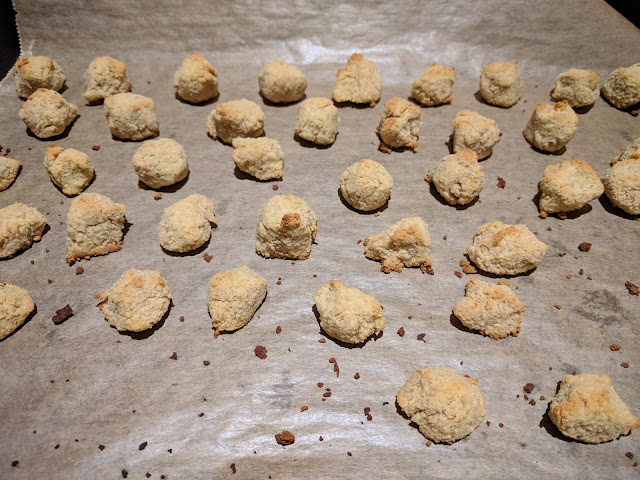Low Carb Pebernødder
Everybody has their particular cookies that they just must have for Christmas. For me, the cookies are the Danish traditional pebernødder ("pepper nuts", known as Pfeffernüssen in Germany) and brunkager ("brown cakes"). With our recent dietary changes, these cookies presented a challenge. Between these and the sugar cookies, I have baked quite a lot this Christmas, and our buckets of almond flour are getting emptied at a surprising clip. With the l-carb shop offering almond flour for as little as €12/kg , I can afford to go through some - that's at least a better price than the €30+ seen in some shops. Here's the recipe for pebernødder - the brunkager must wait till tomorrow since they have to rest for several days. Pebernødder This is my mother's recipe, with low-carb replacement marked in bold: 500 g flour (replace with 200 g flour, 300 g fine almond flour ) 1 tsp ammoniumcarbonate ( hjortetaksalt, in Germany Hirschhornsalz) - use 1 1/2 to 2 ts...





